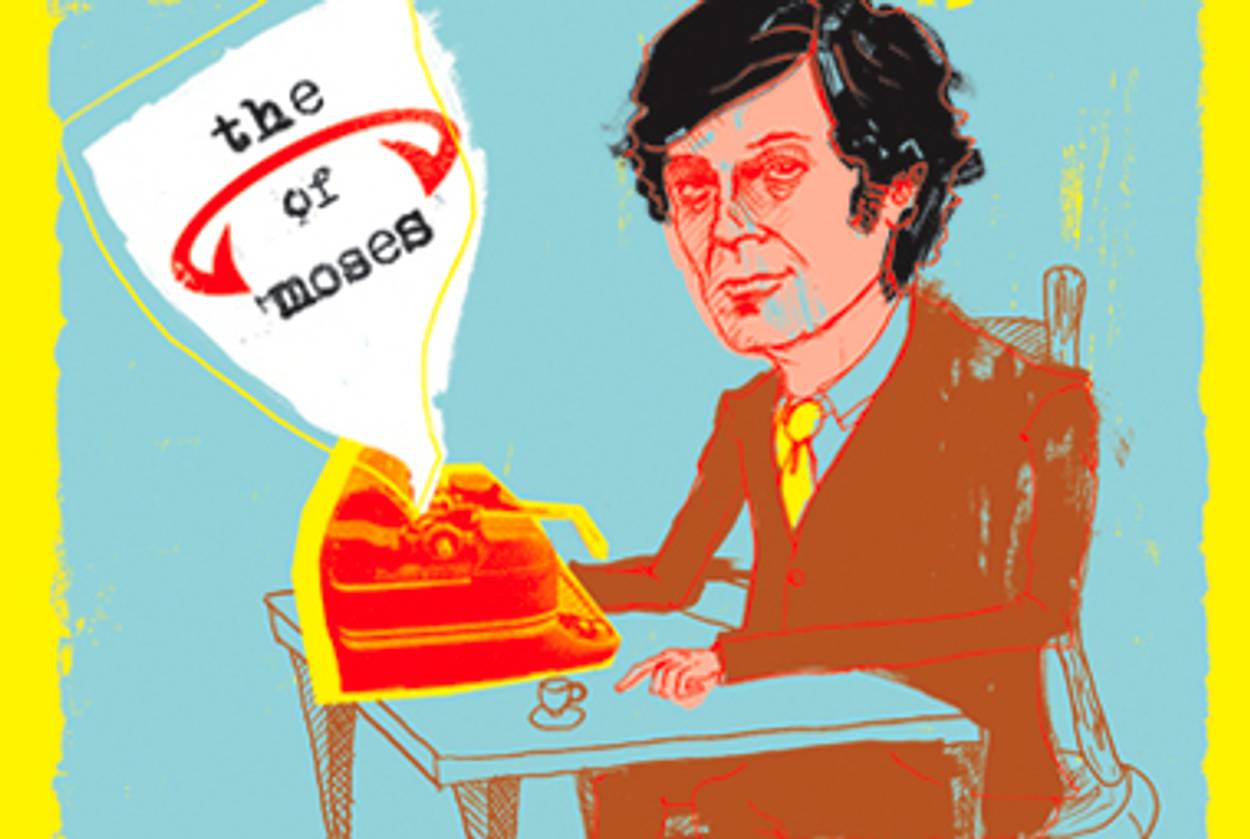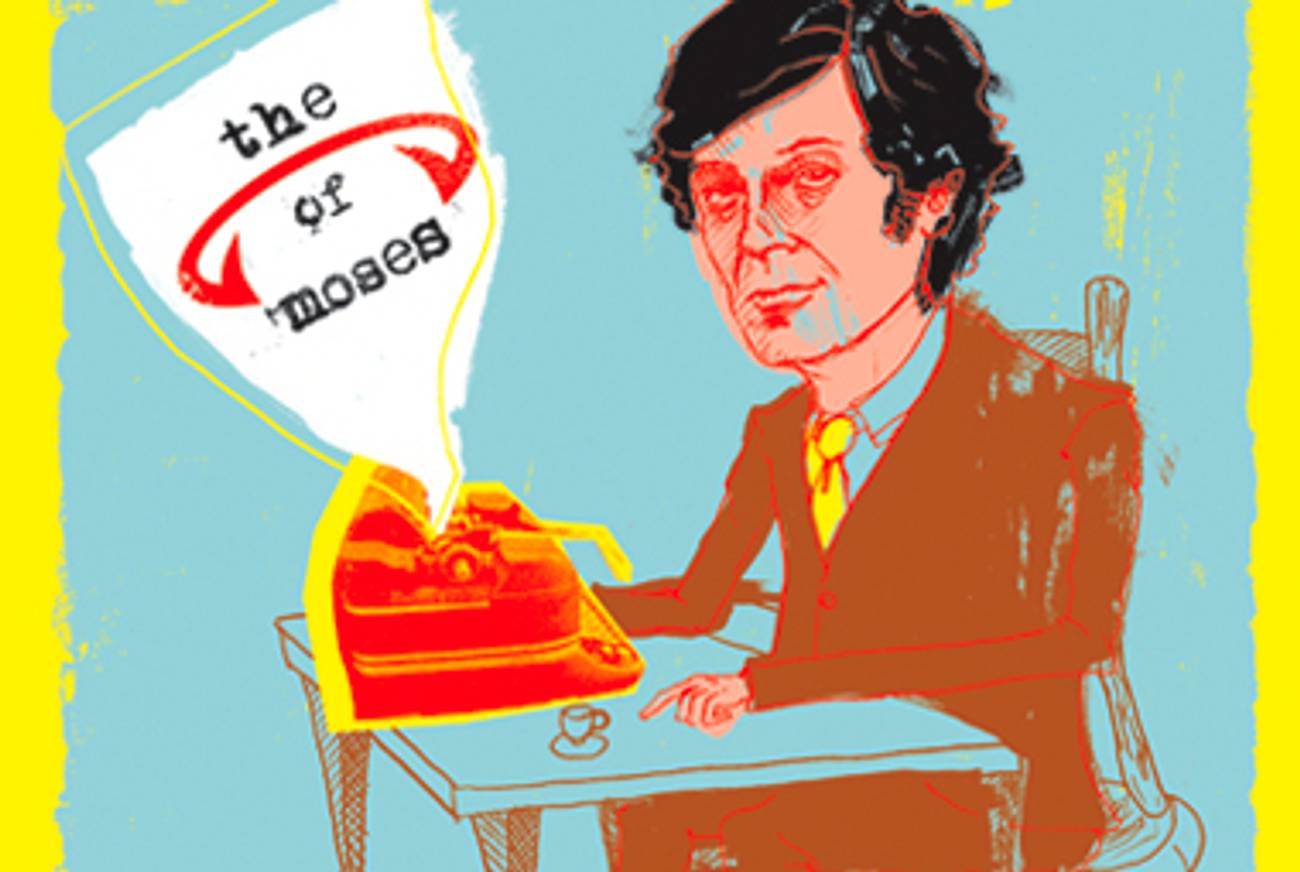Idol Chatter
In his essays, Leonard Michaels worried about the line between art and the profane




Leonard Michaels, the novelist and short-story writer who died in 2003, never quite achieved the same degree of fame as other American Jewish writers of his generation—in particular, Philip Roth. The comparison with Roth is inevitable—both writers were born in 1933, both emerged in the late 1960s as outrageous chroniclers of modern sexual life, both write about themselves in the voices of their recognizably Jewish narrators. Yet Michaels’s short stories, especially the ones collected in his early books Going Places and I Would Have Saved Them If I Could, are darker and more elusive than the rant and zaniness of Goodbye Columbus or Portnoy’s Complaint. If Roth is a kind of metaphysical comedian, Michaels is a severe moralist, whose portraits of the sexual revolution are invariably harsh, alienated, full of dread. “Life is this epitome,” he writes, describing a woman’s body. “Red, tidal maw. Yawn. Aching exfoliant. Hole.”
Since Michaels’s death, Farrar Straus and Giroux has done his work justice, reissuing his Collected Stories and his novels, The Men’s Club and Sylvia. Now comes a new addition to his catalogue, The Essays of Leonard Michaels, a fairly brief collection of critical and autobiographical pieces, many of which first appeared in the Threepenny Review. “Their subjects vary widely,” the book’s editor, Michaels’s widow Katherine Ogden Michaels, writes in her introduction, “encompassing literature, philosophy, and the visual and musical arts, but nearly all of them contain a powerful concern with sense experience itself—particularly with listening and hearing, looking and seeing.”
This is true, as far as it goes, but it doesn’t fully capture the real interest and strangeness of Michaels’s writing. There is only so much a writer can do to evoke the experience of “looking and seeing”; the eye itself provides infinitely more data than words can capture, and written descriptions of artworks are usually condemned to be static and a bit precious. “You see the heavy arms of Moses and the large hands, one touching his belly, the other his hair. You see the man’s posture, erect and tense, and how his body faces you squarely while the head is turned to its left, the eyes cut left, glaring, angry,” Michaels writes in “The Horns of Moses,” a short meditation on Michelangelo’s statue.
What makes this essay remain in the memory is not such descriptions, but Michaels’s interpretation of what he sees. As a writer of stories, he is less concerned with the image Michelangelo made than with the action the statue captures, and its significance. We are seeing Moses at the moment when he descends from Sinai carrying the commandments, only to find the Israelites engaged in worshiping the golden calf. This explains his angry expression, and also the detail that Michaels focuses on—the pair of horns sprouting from the prophet’s head. They are the result of a famous mistranslation by Saint Jerome: in the Hebrew, Moses is said to have rays of light issuing from his face after encountering God, but Jerome’s Latin Vulgate changed them into horns. This is the origin, Michaels explains, of the old myth that Jews have horns.
Yet as Michaels also notes, “Michelangelo was aware of the mistranslation but chose to put horns on Moses anyway.” This changes the horns from an error or an anti-Semitic legend into a deliberate artistic choice, a symbol; and the heart of Michaels’s short essay comes in its last two pages, when he asks what that symbol is supposed to tell us. Are Moses’s horns those of the cuckold, indicating that he has been betrayed by the unfaithful Israelites? Or is it, as Michaels suggests, that “the statue without horns would be less fascinating, less dramatic, less blatantly an image, and the conflict it represents less sharp or pointed, less like horns”?
After all, the reason for Moses’ anger is that the Israelites, by making a golden calf, have violated one of the Ten Commandments: “Thou shalt not make unto thee any graven image, or any likeness of any thing that is in heaven above or that is in the earth beneath, or that is in the water under the earth.” Yet what is this majestic statue if not a graven image? Isn’t Michelangelo repeating the very transgression that Moses is in the midst of punishing? In this sense, the statue is “alive with unresolved conflict,” Michaels writes, “the conflict between unruly life and God’s commandments.” The horns of Moses put us on the horns of a dilemma.
It is this shift from description to interpretation and from interpretation to moral judgment that marks the essay as peculiarly Michaels’s. For he, too, is an artist, and so he too can be convicted of violating the divine ban on representation. Like Cynthia Ozick, another Jewish writer who has worried about the connection between fiction and idolatry, Michaels is deeply suspicious of the urge to see, which is inherently transgressive. In an essay on “Masks and Lies,” he returns to this theme, now with a New Testament reference: “Though Jesus urged people to listen, hear, understand, and believe, pictures and sculptures proliferated in astounding abundance, as if none of the artists had much faith.” Vision, Michaels writes, is a destroyer of mystery, and therefore of morality:
Thanks to movies, we know from the outside—from the camera’s relentlessly neutral point of view—everything one body can do to another for the sake of sexual pleasure, or that displeasure which is also pleasure…. [C]ontemporary movies mostly show us people being tortured, fucked, and killed…movies have convinced us that the technology of luminous revelation respects no mystery and makes everything in the world vulnerable to inspection.
We are back in the fiercely moralized world of Michaels’s fiction. Yet as in his stories, where the narrator always participates in the orgies he condemns, Michaels testifies to the erotic power of the movies. “The Zipper,” one of the autobiographical pieces in the book, recalls Michaels’ first time seeing Gilda, the movie in which Rita Hayworth inspires the morbid sexual desire of two friends, played by George Macready and Glenn Ford. Watching the scene where Hayworth asks Macready to unzip her dress, Michaels writes, was like a Freudian primal scene, revealing all the danger and confusion of sexuality to the teenage boy:
I wanted to forget the scene, but it had happened as if to me, and was now fixed in my personal history more indelibly than World War II. Only an instant of zipper business, yet it colored my love for Rita Hayworth with pity and grief…Seeing this was like a criminal privilege, though I was only sitting in a movie theater, doing nothing but looking. But I looked. I didn’t shut my eyes.
Michaels is at his best when confronting this paradox. In literature, as in film, our desire to see and know is at odds with our need for privacy and the sacred. As a writer, finally, Michaels cannot help embracing that desire, or succumbing to it. Yet his constant sense that there is a sin involved in the exposure of self and others is what gives his essays, like his stories, their bitter strength and their distinctively Jewish character. “The impulse toward truth is built into our existence just as the shape of our eyes is built into our genes,” he acknowledges, before taking his revenge on that impulse with a concluding metaphor: “and the truth, like murder, wants out.”
Adam Kirsch is a contributing editor to Tablet Magazine and the author of Benjamin Disraeli, a biography in the Nextbook Press Jewish Encounters book series.
Adam Kirsch is a poet and literary critic, whose books include The People and the Books: 18 Classics of Jewish Literature.
Adam Kirsch is a poet and literary critic, whose books include The People and the Books: 18 Classics of Jewish Literature.